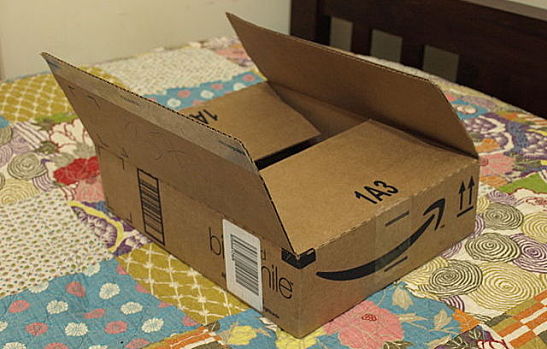Amazon introduced its biggest gambit to date, the Amazon Fire Phone, last week. While the company has been busy building warehouses across the country to offer next-day and even same-day delivery, it has largely eschewed the mobile market, save for the Kindle. The new Amazon smartphone release is proof positive that the company doesn’t just want to compete; it wants to surpass mainstays like Apple and Google with the use of 3-D technology. Is the company headed for the status of king of the mobile jungle, or will they end up extinct like so many others?
Welcome to the Future?
As noted by TechRadar, the new Amazon smartphone comes packed with plenty of interesting features. Some were expected, like the 4.7-inch screen with an ambient light sensor, Dynamic Image Contrast, and Gorilla Glass 3 coating on both the front and back. A quad-core Qualcomm Snapdragon 800 2.2 GHz processor powers the device, and it runs Fire OS 3.5.0, a forked Android spec. The phone’s rear camera touts 13 megapixels and comes with a dedicated hardware button and unlimited photo storage on the Amazon cloud.
On the front, things get more interesting. The rumored 3-D technology did, in fact, arrive in the form of Dynamic Perspective, which creates and then matches a 3-D image to the user’s head position. It does so via four infrared cameras, one on each front corner, and the same technology lets you “tilt” an image to see layered information that may be partially obscured. The Firefly technology—which also has a dedicated button—lets the phone recognize and convert printed information like phone numbers, addresses, or items viewed through the camera. As a bonus, Firefly works from a distance.
Hardly Unexpected
According to a recent InformationWeek article, Amazon’s heavy investment in 3-D is logical since it allows the company to better showcase products their users might like to buy. Interested in a new television? Kid’s toy? Gaming console? The new Amazon smartphone can call up product images and let users look at them from every angle. Of course, that’s just the beginning. Headed to the mall? Amazon could push notifications to the phone—based on recent online searches, of course—offering consumers deals on products they’re already considering at a price brick-and-mortar stores can’t match. Along with speedy delivery—same-day, in some cases—users won’t have to wait long. There’s already talk of Google firing back with apps that identify desired products in nearby stores, helping consumers skip Amazon and the headache of finding the right aisle.
Potential problems? Power, for one: the Amazon Fire comes with a 2,400 mAh battery, which should equate to 285 hours of standby, 22 hours of talk time, or 11 hours of video playback. But how do the 3-D features factor into the equation? What’s more, how much power do the four front-facing cameras consume while in use? On standby?
So far, the company has lived up to the 3-D hype and delivered largely as expected, plus a few bonuses like Firefly. But is that enough to compete with mainstays like Google and Amazon? Microsoft and BlackBerry are corporate giants who found out the hard way that mobile market penetration is no easy feat.
Do you think Amazon could be the next king of the mobile jungle, or is this smartphone primed for speedy extinction?
Image courtesy of Wikimedia Commons
[cf]skyword_tracking_tag[/cf]

